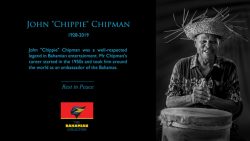Many Bahamians rely on stereotypes, assumptions and stories told by their parents to determine how they relate to persons of another race. This coupled with the fact that most debate on race issues in the country occurs; in the last place it should, on the stage of partisan politics, widening whatever divide between black and white there may be.
Whatever the reason for the existence of this divide, educator, social commentator and Bahamian author Patricia Glinton-Meicholas, said that there is a need for persons to always “beware of a simple explanation for anything”.
“I always feel that you should look at several possible explanations because there are many ᅠthings contributing to that separation but there is still some of the separation based on notions of skin colour,” she said. “It has always been in modern times very quiet in the Bahamas. There are no signs saying that you cannot come into a club or that sort, but there are a lot of issues.”
This level of discomfort between the races, Mrs GlintonMeicholas, said is quite natural because of history even if a person hadn’t lived it.
“There are echoes of it all around you. Now and again someone in the papers would bring up history, especially during election time so that there is always this discomfort and the rest of the world comes in on you, so there is always this sense of discomfort, especially for whites who are a real minority in numbers.
“I heard my parents talking about active discrimination, but even they had no kind of antiwhite thing going on but had a great sense of self-possession and a sense that they had just as much right as anyone else to be here although some may have been stupid enough to try and keep them away from what is owed to them as Bahamians,” Mrs Glinton-Meicholas said.
Mrs Glinton-Meicholas pointed out that in the Americas there had been imposed a separation of races from early on because the whole economy in these areas after the “discovery” of the New World involved the introduction of a variety of racial groups, obviously the most salient of which was that of Africans brought here to work the plantations.
“When you look at that economic base you already suppose superiority/inferiority because – at the least lethal level you have a supervisor and those who are supervised but we know that it went deeper than that. We had owner and people owned and so there is that great separation that is imposed and made legal and has all kinds of control incorporated in society to have it stay that way.” she said.
On August 1, 1834, all slaves in the British Empire were emancipated, but still indentured to their former owners in an apprenticeship system which was finally abolished in 1838.
Only then did this end a system which had for centuries imposed notions of inferiority and superiority connected to skin colour.
Mrs Glinton-Meicholas explained that the baggage that came with this system of slavery and ownership obviously did not provide blacks and whites the opportunity to relate to one another or share with one another.
If the race problems of the 1800s seem too far removed from the present date to explain why there is still that divide, one cannot forget that less than 40 years ago the Bahamas still wrested with the issue of institutionalised segregation and the growing pains leading up to majority rule.
“Majority rule is a very recent date and until that time you had the same notions of inferiority and superiority connected to skin colour carried forward into modern times because of minority rule and that minority happened to be white and the majority happened to be black.
“So because of that you are not in the habit of socializing together. Added on top of that the vast majority of the black people would fall into a certain socio-economic category and I would think that the majority of whites fall into another,” Mrs Glinton-Meicholas said.
However, manv have remarked that with the ugliness of the system pre-majority rule in the Bahamas is still within living memory, it is remarkable that the Bahamas is as integrated as it is.
This, she said, is due to the insouciance that Bahamians had to develop in order to survive in the “bad old days”.
There is a temptation for some Bahamians to identify with the struggle of black Americans of that era, but Mrs Glinton-Meicholas said that while some things may be valuable for black Bahamians to take something from the experience of black America, both groups do not share the same pathology.
“How can they? The whole development of it was quite different and you will notice, for me personally, with some black Americans you always feel a sense of guilt that I am not feeling this great burden they feel and don’t have the same complaints.
“The dissolution of the plantation system came far earlier (in the Bahamas) than happened in the States and was less well organised. That, along with the isolation of the islands, made people less able to keep a social hierarchy based on race.
“If you read the account of the plantation on San Salvador you will see that they tried very hard to keep that separation, but when you are very poor and the plantation is not in the best shape it is difficult to keep the kind of strict hierarchy that you would have seen in the great plantations in the Southern United States,” Mrs GlintonMeicholas said.
However, despite all this, she said, Bahamians are still afraid to speak about race for fear of being labelled racist.
There are many who feel that the Bahamas has never had the benefit of a sincere dialogue on race or racism which afforded blacks the opportunity to ask questions and heal the hurt, particularly of those who lived during the tumultuous period leading up to majority rule. Nor did whites receive the opportunity to address the hurt they may have experienced during the ; fiery political climate of the day.
Nevertheless, Mrs Glinton-Meicholas said that with every new generation this divide is lessening.
“I think because of the school system and people going to school more and more together at a certain level, I think this certainly is likely to improve race relations,” she said.
However, there may be another divisive sociological phenomenon creeping quickly into Bahamian society which will create another divide – social class and economics.
“That will have black Bahamians on both sides of the divide. In New Providence you have enclaves of local whites, the majority of black people still live over the hill, but you have had the development of new subdivisions, the expensive ones for the nouveau riche, and you see that separation of class arising and now you have to look and decide is this only a matter of race or skin colour or is this a thing of class coming in here?
“There is a huge element of class that you see exhibited among those who seem better off, even by the schools children attend, there is that separation, you tend to go where you socialize,” Mrs Glinton-Meicholas said.
By RUPERT MISSICK Jr, Chief Reporter, The Tribune



